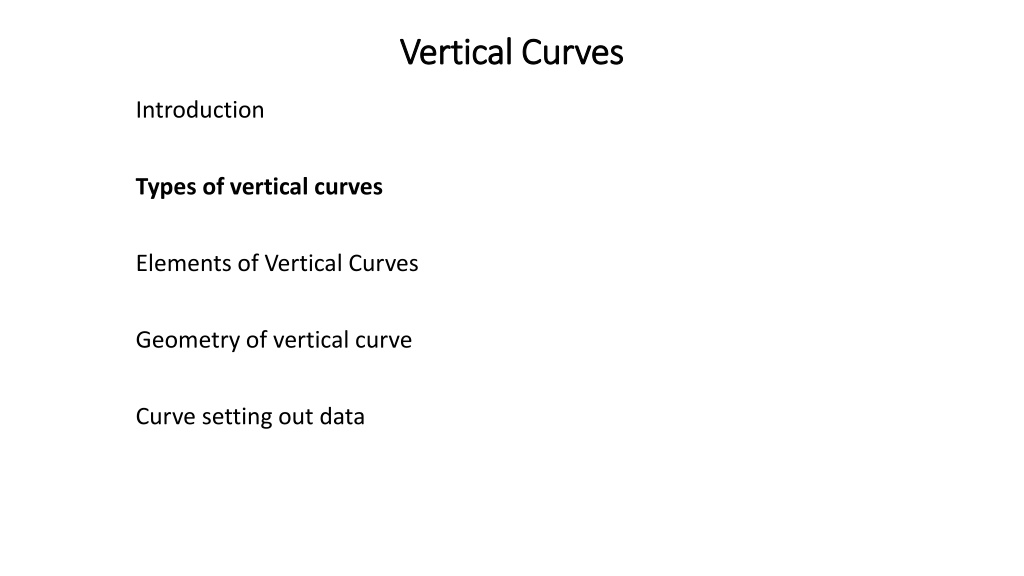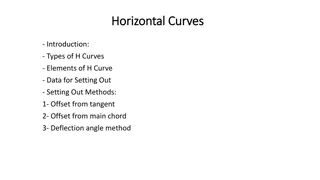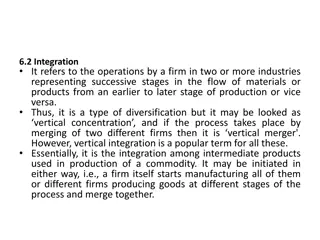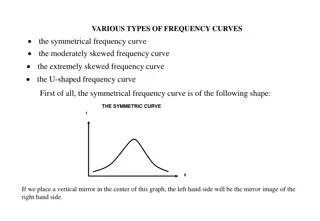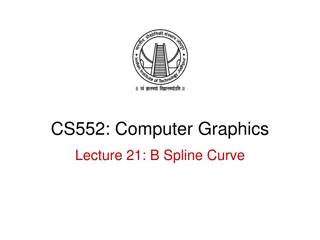Vertical Curves in Road Design
Vertical curves play a crucial role in connecting sloping road segments, such as summit and sag curves. Learn about the types of vertical curves, elements involved, and how to calculate curve lengths and distances for effective road design.
Download Presentation

Please find below an Image/Link to download the presentation.
The content on the website is provided AS IS for your information and personal use only. It may not be sold, licensed, or shared on other websites without obtaining consent from the author.If you encounter any issues during the download, it is possible that the publisher has removed the file from their server.
You are allowed to download the files provided on this website for personal or commercial use, subject to the condition that they are used lawfully. All files are the property of their respective owners.
The content on the website is provided AS IS for your information and personal use only. It may not be sold, licensed, or shared on other websites without obtaining consent from the author.
E N D
Presentation Transcript
Vertical Curves Vertical Curves Introduction Types of vertical curves Elements of Vertical Curves Geometry of vertical curve Curve setting out data
Introduction Introduction These are needed to join two sloping straights in the vertical plane. When joining un upward with a down ward it is called SUMMIT, When joining a down with up it is sag. Grades that ascend (rise up) in the direction of the intersection point are designated as Plus (+ve); Fig. 1 those that descend are designated as Minus (-ve). Grades are measured in terms of percent; that is, the number of meters of rise or fall in a 100m horizontal stretch of the road (g%).
Types of Vertical Curves Types of Vertical Curves Summit and Sag type depends on Fig. 2 change in grade; from +ve to ve and from ve to +ve. When looking up it Is sag; when looking down it is summit. Fig. 3.
Elements of Vertical Curve Elements of Vertical Curve These are referring to figure 3, previous slide. PVC Point of vertical curvature; the point where the curve begins. PVI Point of vertical intersection; where the grade tangents intersect. PVT Point of vertical tangency; where the curve ends. POVC POVT Point on vertical tangent; applies to any point on either tangent. g1 Grade of the tangent on which the PVC is located; g2 Grade of the tangent on which the PVT is located; G The algebraic difference of the grades: G = g2- g1, Point on vertical curve; applies to any point on the parabola.
Elements of Vertical Curve Elements of Vertical Curve Continued L the PVC to the PVT. This length may be computed using the formula L = G/r, where r is the rate of change (usually given in the design criteria). When the rate of change is not given, L (in stations) can be computed as follows: Length of the curve; the horizontal length measured in 100m stations from for a summit curve, L = 125 x G/4; for a sag curve, L = 100 x G/4. If L does not come out to a whole number of stations using these formulas, then it is usually extended to the nearest whole number. You should note that these formulas for length are for road design only, NOT railway. (r = 0.03 0.04). l1 meters. Horizontal length of the portion of the PVC to the PVI; measured in l2 measured in meters. Each of these is half length of curve for symmetric curves. Horizontal length of the portion of the curve from the PVI to the PVT;
Elements of Vertical Curve Elements of Vertical Curve Continued e Vertical (external) distance from the PVI to the curve, measured in meters. This distance is computed using the formula: e = LG/8, where L is the total length of the curve in stations and G is the algebraic difference of the grades in percent (g2 g1). x Horizontal distance from the PVC to any POVC or POVT back of the PVI, or the distance from the PVT to any POVC or POVT ahead of the PW, measured in meters. y Vertical distance (offset) from any POVT to the corresponding POVC, measured in meters;
Geometry of Vertical Curve Geometry of Vertical Curve It is common to describe the vertical curve geometrically as a parabola Parabolic form of curve ; Y = ax2+ bx + c c is the level of PVC; b=g1; y = ax2; at x=L/2; y=e; hence: e = a (L/2)2; from which a = e / (L/2)2 and y= ax2= [e/(L/2)2]x2= [x/(L/2)]2e; if l = L/2 then: y = (x/l)2(e) which is the fundamental relationship of the parabola that permits convenient calculation of the vertical curve offsets data.
Geometry of Vertical Curve Geometry of Vertical Curve The figure 4 below demonstrates geometry of vertical curve Fig. 4.
Summary of Steps to prepare setting out data Summary of Steps to prepare setting out data To prepare setting out data for vertical curve: Given data: g2and g1and curve length, L (or rate of curvature, r) Steps of solution: G = g2- g1 (in %) (1) Given r; L = G/r.......(r=G/L)...................... (2) e = LG/8 .. (3) Offset from tangent to curve for distance x; y=(x/l)2(e) (4) Where, (l=L/2);
Solved Example Solved Example Example Example of Symmetrical Vertical Curve A symmetrical vertical curve is one in which the horizontal distance from the PVI to the PVC is equal to the horizontal distance from the PVC to the PVT. In other words, l1equals l2. The solution of a typical problem dealing with a symmetrical vertical curve will be presented step by step. Assume that you are given the following data: g1 = +9%, g2 = 7%, (r = 0.04) or L = 400.00m, or 4 stations. The station of the PVI = 30 + 00, elevation of the PVI = 239.12 m The problem is to compute the grade elevation of the curve to the nearest hundredth of a meter at each 50-m station.
Solution of the Example Solution of the Example Steps of solution: Calculate level of PVC (constant, c); = Level of PVI g1(L/2) Calculate level of tangent point x meter from PVC. This will be b x above or below PVC = g1x + Level of PVC (c) Calculate offset from this tangent point to corresponding curve point: a x2= (x/l)2e (same algebraic sign as e); where, l = L/2 If r = 0.04; G = -7 (9) = -16; then L = G/r = 16 / 0.04 = 400m OK -Level of PVC = 239.12 (9/100) (400/2) = 221.12m -Level of tangent point 50m from PVC = = 221.12 + (9/100) (50) = 221.12 + 4.50 = 225.62m -External distance e = LG/8 = [400x(-16) /100] / 8 = - 8m Offset to curve = y50= (50/200)2e = (50/200)2(-8) = - 0.5m Level of curve point = 221.12 + 4.50 0.50 = 225.12m
Prepare setting out data in table form Prepare setting out data in table form setting out data for vertical curve are usually given in table form as below: point Chainage (m) Tangent point level (m) Offset from tangent, y (m) Curve point level (m)
